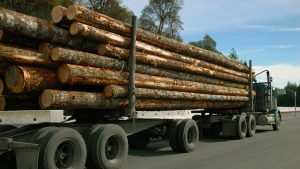Canada’s freight rail network faces a potential shutdown this week, threatening significant repercussions for Canadian and US economies. A dispute over the labor contract between Canadian rail operators and the Teamsters Canada Rail Conference union is at the center of the possible strike.
On Sunday, the country’s two largest railway operators, Canadian National Railway (CN) and Canadian Pacific Kansas City (CPKC), issued lockout notices to the Teamsters union. Unless agreements occur, a strike could begin as early as August 22, locking out nearly 10,000 workers and shutting down Canada’s rail freight network, which exported $279 billion (C$380 billion) in 2022 by rail.
A Canadian rail stoppage could impact supply chains beyond the Canadian borders. According to the Railway Association of Canada, Canadian rail transports lumber, oil, coal, cars, wheat, chemicals, fertilizer, and other goods at a rate of over 900,000 tons a day. The US imports resources like lumber, oil, and other materials used in the construction industry. Over 60 percent of the $23 billion (C$31.8 billion) in Canadian lumber exported in 2023 was by rail (Statistics Canada).
A strike could cause ripple effects for transportation alternatives, like trucking, which could experience higher demand, price increases, and delivery delays. In the US, freight railroads transport more than two million rail cars of construction-related materials annually. According to the American Association of Railroads, one rail car can carry as much crushed stone, sand, and gravel as five trucks.
Canada’s Labor Minister, Steven MacKinnon, informed the railways and the union that he would not intervene with binding arbitration. On Monday, he stated via social media X that “CN Rail, CPKC, and Teamsters must do the hard work necessary to reach agreements at the bargaining table and prevent a full work stoppage.”
Though the potential shutdown involves Canadian railways, cross-border transport would be disrupted and continue until a labor resolution is reached, potentially impacting the US supply chain for construction materials and straining domestic resources.











Recent Comments